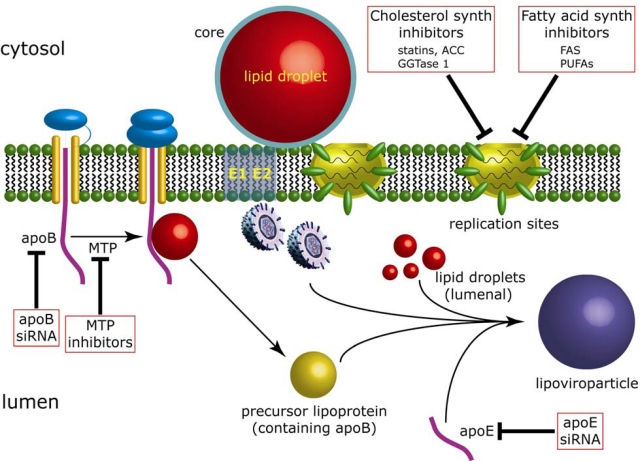Figure 2.
Inhibition of HCV RNA replication and virion assembly by blocking lipid biosynthesis and VLDL assembly. HCV RNA replication occurs at the ER membrane in specialized sites (the membranous web) that contain replication complexes. HCV core associates with cytosolic LDs and its interaction with NS5A at HCV RNA replication sites enables engagement of viral genomes with core to initiate virus assembly, possibly creating nucleocapids. Assembly is then thought to proceed through unknown processes in which the viral envelope glycoproteins (E1 and E2) are added to nucleocapsids and combine also with the VLDL assembly pathway to yield lipoviroparticles [121] that are released from the cell. Production of virus particles is thought to occur through interaction with the VLDL assembly pathway, which is a two-stage process. Firstly, there is initial lipidation of translocated apoB by MTP to create a pre-VLDL particle. Bulk triacylglycerol from cytosolic LDs is added to pre-VLDL particles through a process that is considered to produce lumenal LDs. Additional lipoprotein components are added also at this stage (including apoE) to generate mature VLDL. Steps in fatty acid and cholesterol biosynthesis and the VLDL assembly pathway that can be impaired thereby blocking HCV RNA replication and virion assembly are boxed. Abbreviations are as follows: ACC, acetyl-CoA carboxylase; FAS, fatty acid synthase; GGTase 1, geranylgeranyltransferase 1; MTP, microsomal transfer protein; PUFAs, polyunsaturated fatty acids.

